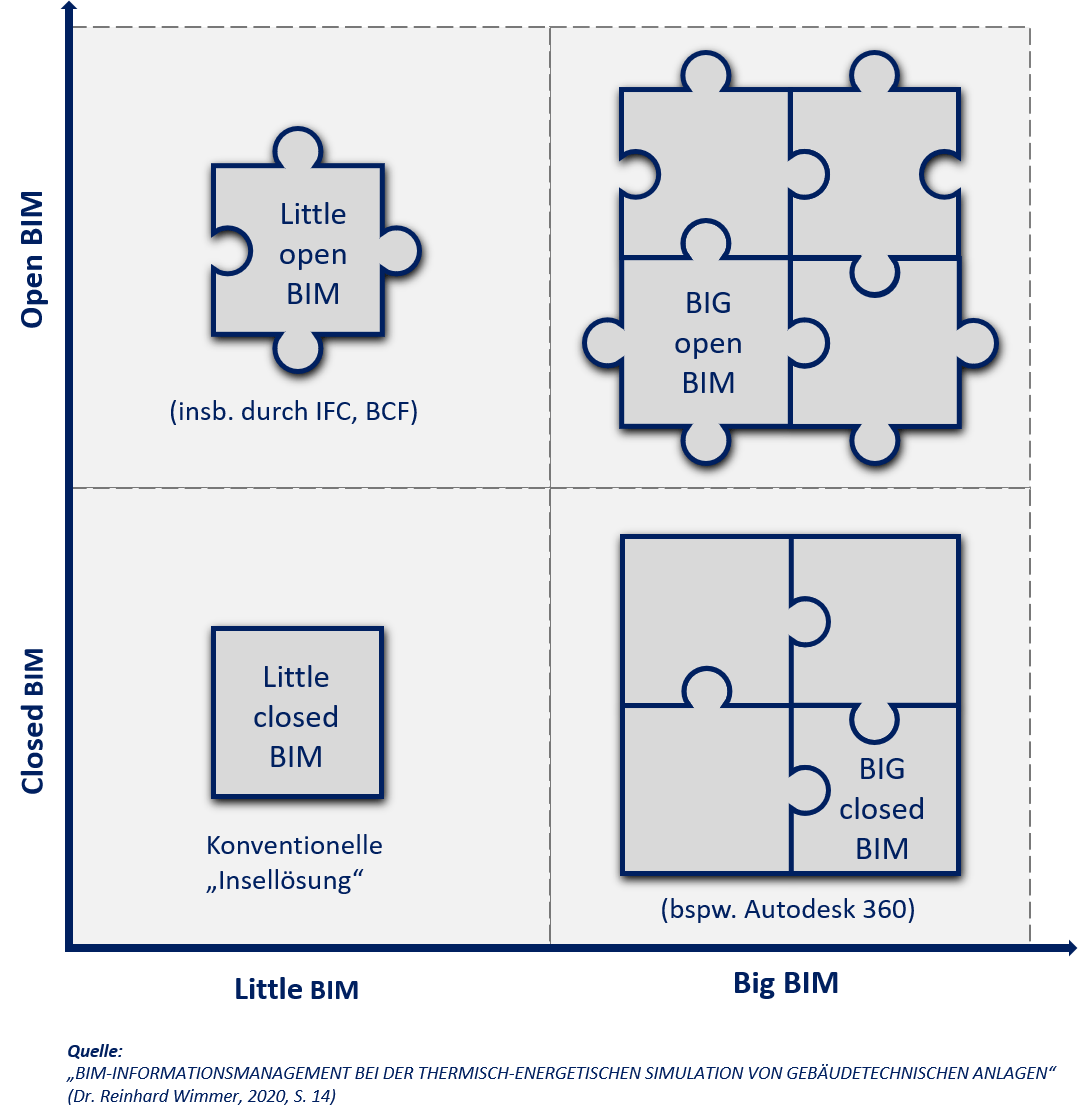Open BIM versus closed BIM – the challenges
BIM tools are mainly distinguished between the following implementation methods:
- Little- vs. Big-BIM and
- Closed- vs. Open-BIM.
Definition of little BIM vs. BIG BIM / closed BIM vs. open BIM
The first method of application (little BIM vs. BIG BIM) refers to the scope of the integral application. BIG BIM refers to the use of this method across several disciplines. In this case, several disciplines work together integrally, with the help of so-called specialist models. Little BIM, on the other hand, refers to one specialist model in each case, whereby the respective discipline maps its data and information in a corresponding model.
The second application method (closed BIM vs. open BIM) is a reference to the openness of the application. It is not necessarily a question of whether the application is Open Source or not, but rather of the interoperability between the applications, i.e. the existing interfaces. What is important here is, on the one hand, which interfaces are available, and on the other hand, how deeply they are implemented and, moreover, how configurable they are by the user.

The challenges
Unfortunately, most BIM solutions are still isolated applications, i.e. they fall into the category of Little Closed BIM. Data can only be exchanged between the applications to a limited extent or not at all. True BIM is not possible in this way. For this reason, the first BIG BIM approaches have developed which precisely address this continuity in data exchange. However, the most advanced approaches are from proprietary software providers, i.e. BIG Closed BIM solutions. This is also obvious, because the in-house interfaces within a software family are the most likely to be brought under control. The danger of this, however, is that users become very strongly tied to the individual software manufacturer (“vendor lock in”). Therefore, it would be healthier for the market to pursue a Big Open BIM strategy, which, however, is much more complex, since different software manufacturers have to integrate each other. IFC and BCF, for example, are open formats that should enable the necessary standardized interfaces.
Tips from the OpenProject BIM experts:
- In closed BIM, data exchange is based on a closed information model of a software manufacturer. To enable data exchange within a project, a strict specification of the software to be used is required for all participating specialist planning areas. If you fail to specify this at the beginning of the project, it is difficult to persuade the participants to use the software of a particular manufacturer during the project. Therefore, specify the use of a certain software at an early stage and have the working method documented or confirmed, e.g. in a BIM execution plan (BAP).
- With open BIM, different software applications can be used since they are able to communicate with each other through uniform formats. However, since this is not always technically possible or is only possible under certain conditions, specify the formats and versions to be used at an early stage, for example in the client information requirements (AIA). You should also check the compatibility of the software applications involved, e.g., by means of a so-called conformance test.



